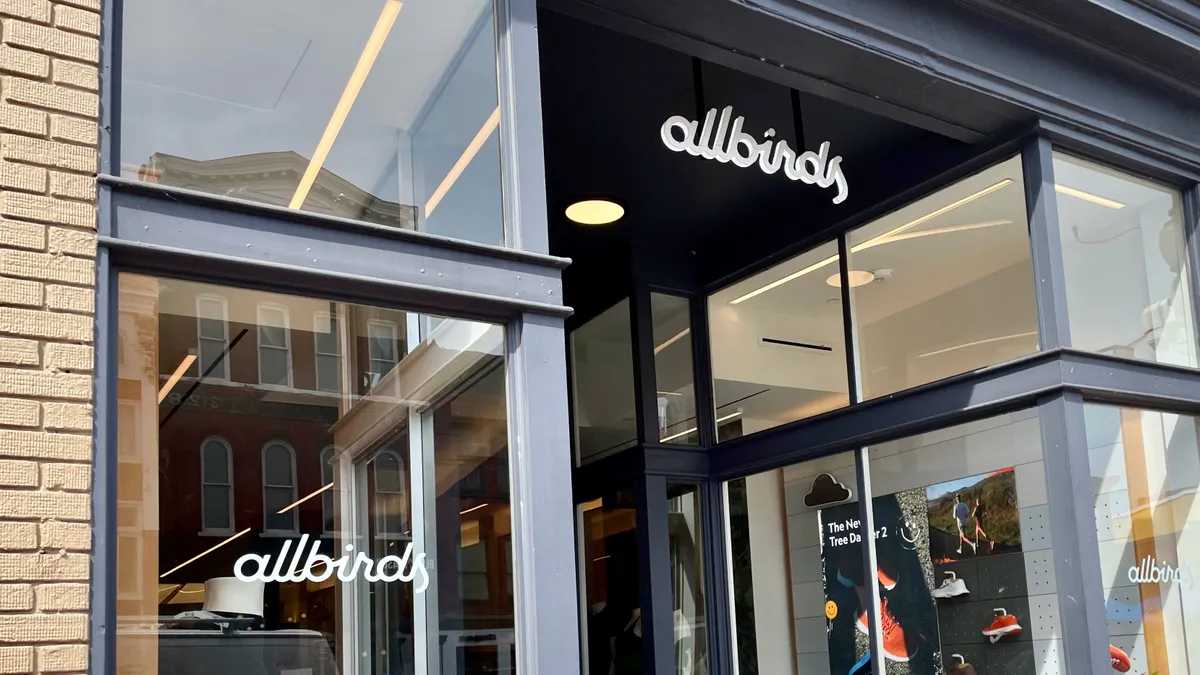When it comes to earnings results, there are a slew of metrics companies report out.
Net income or loss, revenue, gross margin, operating income or loss – it takes a watchful eye with experience to properly dissect these measures. Is a company performing well or on its way toward profitability? Earnings reports can help shed light on that.
But to make matters more complicated, there’s the existence of non-GAAP (generally accepted accounting principles) financial measures, which are not audited or standardized. Think of these as the chaser to your shot, the supplement to your diet.
“Non-GAAP measures can be a meaningful way to supplement GAAP numbers for a complete picture of business operations and liquidity,” an article from Deloitte said. “Analysts and investors often look at non-GAAP measures for information utilized in their modeling that is not easily or clearly captured from the financial statements.”
Such non-GAAP measures are of increased interest to the U.S. Securities and Exchange Commission due to their growing usage, the potential for them to be misleading and the increasing differences between non-GAAP and GAAP values, per Deloitte. The SEC in December even updated its commonly asked questions webpage regarding non-GAAP measures.
Among non-GAAP measures, one remains king.
EBITDA — or earnings before interest, taxes, depreciation and amortization — and its various sister measures such as adjusted EBITDA, are non-GAAP financial measures commonly used nowadays. The measure allows brands to report their earnings excluding certain factors, such as depreciation. Adjusted EBITDA is simply that – a measure where further adjustments are made to a metric that already has adjustments.
It’s hard to find a company in the retail industry that doesn’t report some version of EBITDA. Warby Parker, On, Purple Innovation, Peloton, Allbirds and more are all brands that report adjusted EBITDA.
EBITDA has its fair share of both supporters and detractors. So, what exactly is it and why are brands so focused on it?
The ‘Wild West’ of measures
What exactly do EBITDA and adjusted EBITDA allow companies to demonstrate?
In theory, they let companies express earnings results without certain factors they deem irrelevant or circumstantial to how the company is performing overall. For example, a company may use EBITDA to calculate earnings without factoring in interest on certain debts or the depreciation of some hard assets like machinery.
But EBITDA is no stranger to criticism, given the measure's lack of standardization.
Its most well-known critic is Berkshire Hathaway Chairman and CEO Warren Buffett, who has openly spoken about his views on the non-GAAP measure for years. In the executive’s letter to shareholders in 2001, he noted that references to EBITDA "make us shudder.”
“Too many managements – and the number seems to grow every year – are looking for any means to report, and indeed feature, ‘adjusted earnings’ that are higher than their company’s GAAP earnings,” Buffett added in a letter to shareholders in 2017. “A management that regularly attempts to wave away very real costs by highlighting ‘adjusted per-share earnings’ makes us nervous. That’s because bad behavior is contagious: CEOs who overtly look for ways to report high numbers tend to foster a culture in which subordinates strive to be ‘helpful’ as well.”
The fight against reporting out EBITDA has objectively failed, but Buffett isn't alone in criticizing it.
“The thing about EBITDA is of course that it's the Wild West.”

Chris Higson
Professor of Accounting Practice at London Business School
In 2013, Professor of Accounting Practice at London Business School Chris Higson wrote that EBITDA’s popularity began in the 1990s when “there were many loss-making technology businesses on the market at sky-high valuations. Since EBITDA was more likely to be positive than EBIT, it provided a useful basis for valuation multiples.”
The view that EBITDA represents a better measure of profit is “nonsense,” Higson wrote at the time, adding that depreciation is a real cost and omitting depreciation doesn't adequately measure income.
EBITDA allows companies to freely choose what to include or exclude. What’s more, companies can alter those choices over time.
“The thing about EBITDA is of course that it's the Wild West,” Higson told Retail Dive. “And therefore, the rules you can include or exclude from that particular income measure are whatever you feel like.”
Online retailer Stitch Fix in its 2020 annual earnings report included both adjusted EBITDA and an adjusted EBITDA measure that did not account for stock-based compensation expenses, which the company defined as “a significant recurring expense in our business.”
But in its 2021 annual report, Stitch Fix stopped reporting that second metric and only reported adjusted EBITDA, which does account for stock-based compensation expenses. Stitch Fix did not respond to Retail Dive's request for comment on the change at the time of publication. The company’s stock-based compensation expense increased from $67.5 million in fiscal 2020 to $127.4 million in 2022.
The depreciation costs related to assets can greatly impact earnings results.
Alphabet — the parent company of Google — is part of a group of tech companies that have extended the estimated lifespan of servers and other equipment in a move that can increase profits and reduce depreciation expenses, according to reporting from The Wall Street Journal in May. Alphabet in January adjusted the life of servers and some network equipment from four and five years, respectively, to six years — a move that resulted in a $770 million bump to its net income for the period ended March 31.
The importance of a company’s EBITDA and adjusted EBITDA depends on what is or isn’t added back, Piper Sandler Senior Equity Research Analyst Abbie Zvejnieks told Retail Dive.
"I think it's really important to understand what the add-backs are,” Zvejnieks said. “There are certain companies that you look back at and they're adding in pre-opening expenses for stores or transitory costs in the supply chain. And I think that's where it gets a little bit more hairy because those are real expenses. Like, should we really be adding those back?"
EBITDA can be useful, however, as an internal measure if a company is trying to put pressure on managers to improve margins, according to Higson.
The measure is also sometimes used to compare the performance of a group of similar companies within an industry.
“If you have two companies and one has a lot of debt, they naturally have more interest,” Julian Yeo, clinical professor of accounting at New York University’s Leonard N. Stern School of Business, told Retail Dive. “So, therefore, their net income will be lower, so the two companies are no longer comparable.”
So what does EBITDA look like in practice across the direct-to-consumer market?
Show me the money
The conversation around EBITDA and profitability can vary based on the age of a company. DTC brands in retail, many of which are still startups, often haven't reached profitability and may use EBITDA as a measure of potential.
From an analyst’s perspective – particularly one that covers companies that haven’t been around for long periods of time – earnings per share tends to be the primary profitability metric, according to Wedbush Senior Vice President of Equity Research Tom Nikic.
“We do also look at a company's enterprise value to EBITDA ratio for your valuation purposes,” Nikic told Retail Dive. “One reason why I think it's become more talked about recently is with the slew of companies that came public in the past five years or so, most of those companies weren't net income profitable.”
EBITDA as a measure has a lot to do with a company’s stage, Warby Parker co-founder and co-CEO Neil Blumenthal told Retail Dive.
“At the end of the day, as an entrepreneur and as an executive, I'm going to manage the business based on the real world.”

Neil Blumenthal
Co-founder and co-CEO of Warby Parker
“It really comes down to how the investor views a business,” Blumenthal said. “For growth companies, EBITDA and adjusted EBITDA appear to be sort of the best indicators of long-term success for a lot of these investors.”
With such companies losing money and burning through cash, Nikic said that it's important to understand how much longer the brand’s cash would last.
“There's this sense that EBITDA tends to track with cash flow a little bit more closely than net income does,” he said. “Since you're adding back some non-cash charges … a lot of times you'll hear companies sort of use EBITDA interchangeably with cash flow.”
Ultimately, however, a company’s bottom line is the first indicator of profitability, according to Yeo.
“We're going to always look at the bottom line. If net income is positive, we are profitable,” Yeo said. “If net income is not positive, we may want to look above the net income line.” When placing a valuation on a company with a net loss, for example, Yeo says an expert would next look to see if EBITDA is positive.
Net income is the most comparable GAAP measure to EBITDA and adjusted EBITDA, according to the SEC. But looking at the numbers side by side can sometimes tell two very different stories. A look at various direct-to-consumer brands shows sometimes significant differences between those metrics.
Among the companies that have gone public in the last five years is Warby Parker. Warby Parker filed to go public in 2021 through a direct listing.
The company is in a growth stage and viewed as such by investors, according to Blumenthal, which informs what metrics Warby Parker and its shareholders care about.
Warby Parker has yet to generate a net income on an annual basis, though adjusted EBITDA remains positive
The fact that investors show an interest in adjusted EBITDA is reason enough for the eyewear company to continue reporting it, Blumenthal says, despite any criticism of the metric.
“At the end of the day, as an entrepreneur and as an executive, I'm going to manage the business based on the real world,” Blumenthal said. “And so I'm going to always take the perspective of the investor. … I think the idea that EBITDA or adjusted EBITDA is not as pure of a metric almost is neither here nor there. It's about what are investors using to make decisions whether to invest or not invest.”
Warby Parker in August reported its second-quarter net revenue increased 11% year over year to $166.1 million and its net loss narrowed to $15.9 million. The brand touted its improved adjusted EBITDA margin at 8.5%, with adjusted EBITDA increasing to $14.2 million.
Warby Parker’s fiscal 2022 adjusted EBITDA deducted $31.9 million in depreciation and amortization expenses, marking a 47% increase from the year before.
Looking forward, Blumenthal feels positive about Warby Parker’s future as COVID-19 pandemic trends that halted overall growth in the optical industry continue to normalize. The executive expects e-commerce growth to return for the brand even as it continues to invest in its brick-and-mortar strategy.
“I'm still very bullish and excited about e-commerce and it will continue to grow, it just needed to normalize,” Blumenthal said.
One of DTC’s success stories right now is athletics company On, which reported in August that second-quarter adjusted EBITDA nearly doubled from the year before to 62.7 million Swiss francs (about $70 million at the time of publish). At the same time, net income dropped 93.3% to 3.3 million Swiss francs. On’s net sales increased 52.3% year over year to 444.3 million Swiss francs.
The brand previously told Retail Dive in January that it has been profitable since 2014. A look at its financial filings shows that the company has steadily increased its positive adjusted EBITDA since 2018 (figures dating back to 2014 weren’t readily available), but was pulling an annual net loss from 2019 to 2021.
On swung from a net loss to an income in fiscal 2022 as the athletics brand’s net revenue surpassed 1B Swiss francs
The amount of costs On deducts when it calculates adjusted EBITDA has grown as well. Depreciation and amortization costs deducted in On’s adjusted EBITDA in fiscal 2022 reached 46.4 million Swiss francs, an increase from 31.4 million Swiss francs the year before.
“Adjusted EBITDA will continue to be an important metric for us, as it’s the best way to measure our profitability on a comparable basis,” On told Retail Dive via email when asked how it measures profitability. “Since 2014, we have consistently increased our adjusted EBITDA margin every year, in line with our strategy to achieve significant growth while increasing profitability.”
On swung to a net income in 2022 when it reported its annual net income reached 57.7 million Swiss francs. But not all companies have been so fortunate.
DTC brand Allbirds has been undergoing a transformation plan, which has so far included executive leadership changes and layoffs, in order to focus on its path to profitability. The company’s latest Q2 earnings beat expectations in that net revenue only fell 9.8% year over year to $70.5 million while net loss improved 1.5% year over year to $28.9 million. Allbirds’ adjusted EBITDA loss for the quarter improved year over year from $20.8 million to $18.3 million.
Since fiscal year 2019, Allbirds’ annual adjusted EBITDA has been in the negative alongside its net loss.
Allbirds has seen its net loss and adjusted EBITDA loss grow at similar rates since 2019
The depreciation and amortization costs deducted in the brand’s fiscal 2022 adjusted EBITDA loss increased 61% from the year before to about $15.8 million. But the retailer made another significant change in 2022 as well. In calculating its adjusted EBITDA, Allbirds chose to include the costs associated with its discontinued apparel business, which worsened its loss by some $17.1 million. Previously, the retailer had excluded those costs, which “made their adjusted EBITDA look better, because it allowed them to show smaller operating losses,” Nikic told Retail Dive via email.
“The change that they made is the more conservative stance to take, essentially admitting that they made an operational mistake and allowing the negative impact to show up on the EBITDA line," Nikic added.
When asked how it measures profitability, Allbirds said it has historically “provided financial guidance on net revenue and Adjusted EBITDA. We're in the midst of a strategic transformation, which sharpens our focus on reaccelerating growth with an aim to be free cash flow positive and Adjusted EBITDA positive in 2025.”
Whether or not EBITDA or adjusted EBITDA is an adequate measure of profitability, brands are certainly relying on it to demonstrate growth. Even as it varies, sometimes considerably, from a brand’s net income or loss. And despite discrepancies in how brands report EBITDA, and varying opinions on its usefulness as a metric, it is likely to remain a key piece of brands’ earnings reports.
“Naturally, you're going to be EBITDA profitable before you're net income or EPS profitable,” Nikic said. “It's much easier at a point for a company [to] point out and say, ‘Hey, look like we're going to be EBITDA profitable in two or three years.’ That's a more compelling argument.”





















